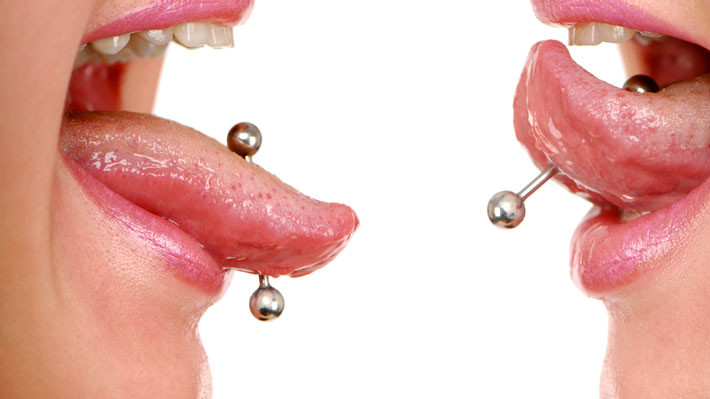
Oral piercings and jewellery – Is it a dental nightmare?
“Freedom of expression” is a lifestyle trend that most teenagers for decades have lived by. Without a doubt those are the most rebellious years of a human’s life and in our attempt to be different and “let our voices be heard” we turn to the various taboos in society. One such taboo is the rising phenomenon of oral piercings and jewellery.
While dental adornments may look good or help assert independence, the question remains as to whether they are really a dental nightmare. Every day, dentists get asked by worried parent about the dangers of their defiant teenager’s oral piercing.
The truth is most dentist consider these piercings, whether it be lip, tongue or cheek, as serious health risks. Remember, our mouths are homes to thousands of bacteria, regardless of how much we clean it. Additionally, the tissue that is found in our mouths is very sensitive. No matter how we spin it, a piercings is a wound, and that combine with mouth bacteria is a recipe for disaster.
Within our mouths, it is warm and damp, making it an impeccable reproducing ground for microorganisms and initiating the potential for contamination and aggravation. The infection can start gently, normally with slight swelling and mild discomfort. But, without treatment, the contamination may escalate into something even more unsafe, such as endocarditis.
A puncturing performed under un-sterile conditions conveys even more serious danger. There have been cases, albeit uncommon, where a routine tongue piercing swelled so much that it blocked the air passages and the patient had life-threatening breathing problems. Furthermore there are numerous situations where metal body adornments split teeth or damage the teeth enamel. Teeth gems have also been known to be choking hazards when they loosen or break.
Unfortunately, the danger doesn’t stop there. When you bring outside matter into your mouth, your body reacts by producing excess saliva, which in turn can bring about unsightly dribbling. Additionally, when a patient with an oral piercing requires an x-ray amid a dental examination, the metal gems make it hard to acquire a reasonable, exact picture for evaluation. This can prove detrimental to the patient’s oral health.
Loose or ineffectively situated adornments rub against gum tissue, expanding the danger of contamination and gum infection. On the off chance that metal adornments scratches, breaks, or splits teeth, teenagers may require far reaching dental work to restore their teeth to its former glory. To add injury to insult, damaged teeth become more sensitive to cold and hot substances, and may even require extraction.
Thankfully, all hope is not lost. Although dentists recommend complete removal of oral piercings, one can still keep it. You just have to accept that there are risks associated with your choice, practice impeccable dental hygiene, remove your piercing when playing contact sports, and regularly visit a dental clinic for check-ups.

